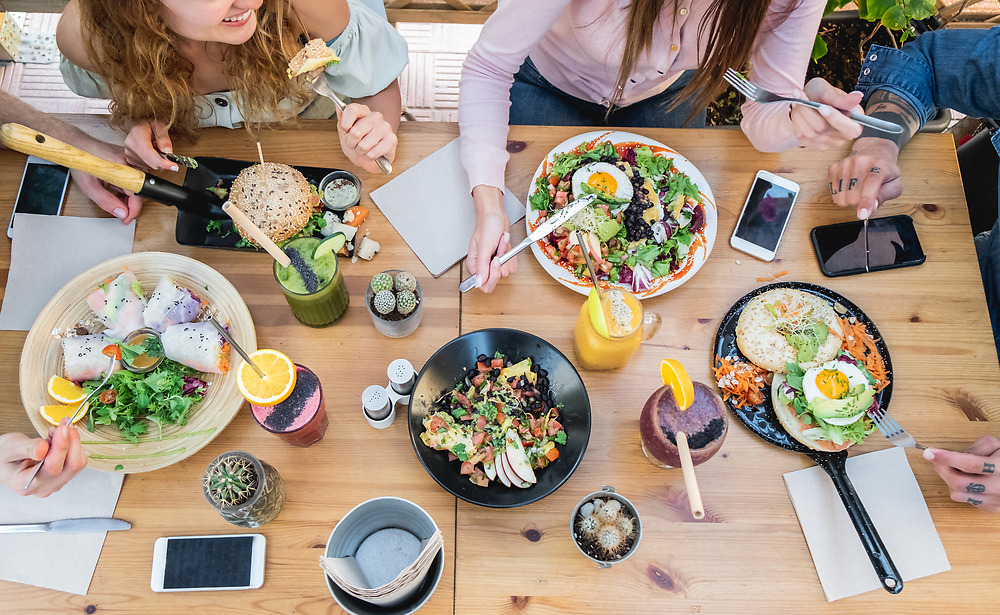February 10, 2022 | Press Release
Immigration Patterns Are Reflected in Facebook Data on Popular Foods and Drinks

© iStockphoto.com/DisobeyArt
Researchers have developed a novel strategy for using Facebook data to measure cultural similarity between countries, revealing associations between immigration patterns and people’s food and drink interests. Carolina Coimbra Vieira of the Max Planck Institute for Demographic Research, and colleagues present these findings in the open-access journal PLOS ONE.
Migration may play a key role in shaping cultural similarities between countries. However, its influence is difficult to study, partly due to the challenge of quantifying culture. Typically, researchers have relied on surveys to compare different countries’ cultures, but surveys are associated with several difficulties, such as their cost, the possibility of bias in their construction, and the difficulty of applying them to a large number of countries.
To complement survey data, Coimbra Vieira and colleagues have now developed a new analytical method based on earlier evidence that food and drink preferences may be a proxy for cultural similarities between countries. The new method employs data on the top 50 food and drink preferences for any given country as captured by the Facebook Advertising Platform.
Novel method uses food and drink interests to quantify cultural similarity between countries
To demonstrate the new method, the researchers applied it to 16 countries, finding that food and drink interests generally reflect immigration patterns. In most countries, including the U.S., preferences for foreign food and drink align with top foods and drinks in the countries from which most immigrants came. Countries with fewer immigrants, such as Indonesia, Japan, Russia, and Turkey, stand apart from the others, showing more idiosyncrasy in their preferences for foreign foods and drinks.
The findings align well with earlier survey data, and they highlight asymmetry between countries; for instance, the top 50 foods and drinks from Mexico are more popular in the U.S. than the top 50 U.S. foods and drinks are in Mexico, reflecting a greater degree of immigration from Mexico to the U.S. than vice versa.
Overall, the researchers say, this study suggests that immigrants indeed help shape the culture of their destination country. Future research could refine the new method outlined in this study or repurpose it to examine and compare other interests beyond food and drink.
The authors add: “We analyze data from Facebook users about their food and drink preferences to measure the cultural similarity between 16 countries. When compared with official migration data, we observe that countries with more immigrants show a higher cultural similarity between the origin and destination countries.”
This press release was first published by PLOS ONE press and can be found on Eurekalert
Additional Info
Carolina Coimbra Vieira, as explained above, your recent paper finds that food and drink preferences generally reflect immigration patterns. Can you give an additional example?
Yes, there are a lot of immigrants from Great Britain, Argentina, France, and Brazil living in Spain, and our analysis showed that Chile, France, Argentina, and Brazil have the most similar food preference to Spain. This means that 4 of 5 large immigrant communities have foods and drinks that are also really popular in Spain. For example the Açaí bowl, a delicious typical food from Brazil!
Why did you look into this topic?
I am fascinated by how much information people share online and how fast online social networks have grown in recent years. Facebook alone, the most popular social network, has nearly 2.5 billion monthly active users. And the users share a lot of personal information about their preferences in the form of behavioral signals, such as likes and shares. This is an ideal environment to infer data from online populations.
And what did you find most interesting?
Most interesting for me is to be able to use social media data to propose new ways to answer old questions.
Original Publication
C. Vieira, C., Lohmann, S., Zagheni, E., Vaz de Melo, P.O.S., Benevenuto, F., Ribeiro, F.N.: The Interplay of Migration and Cultural Similarity between Countries: Evidence from Facebook Data on Food and Drink Interests. PLOS ONE (2022). DOI:10.1371/journal.pone.0262947
Authors and Affiliations
Carolina Coimbra Vieira, Max Planck Institute for Demographic Research, Rostock
Sophie Lohmann, Max Planck Institute for Demographic Research, Rostock
Emilio Zagheni, Max Planck Institute for Demographic Research, Rostock
Pedro O. S. Vaz de Melo, Computer Science Department, Federal University of Minas Gerais, Belo Horizonte
Fabrício Benevenuto, Computer Science Department, Federal University of Minas Gerais, Belo Horizonte
Filipe N. Ribeiro, Federal University of Ouro Preto, Ouro Preto
Open Source Code
According to Facebook’s Terms of Service, the raw data collected from the Facebook Advertising Platform cannot be shared publicly. In this case, we do not share the raw data. Instead, the repository contains all the measures derived from the Facebook Ads data and the code to replicate all the analyses and generate the figures. See: github.com/carolcoimbra/cultural-similarity-fb.